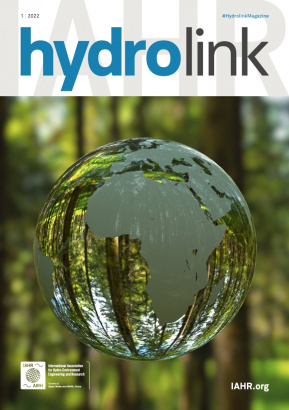The latest issue of Hydrolink magazine is OUT and FREE for everyone!
Among all articles we especially recommend "Land dynamics and sustainable management of the Fincha River Basin, Ethiopia" by co-authorship of Motuma Shiferaw Regasa and Michael Nones from IG PAS.
During the last decades, Ethiopian society started to develop at an ever-increasing pace, transforming the country from a place mainly occupied by forest and uncultivated areas to a region mostly covered by commercial farms and settlements. Such changes caused higher soil erosion, affecting the quality of the inland waters and increasing the rate of siltation in hydropower reservoirs.
Focusing on the Fincha River, we are studying past land use and land cover changes, to predict future trends and to evaluate how they alter the river sediment yield.
Indeed, over the last thirty years, the Fincha sub-basin land use changed significantly: the natural forest was mostly converted into agricultural and grass/swamp areas. An increase in areas covered by waterbodies and built-up was also observable, mainly connected to increasing human pressure and the construction of new hydropower reservoirs.
For the future, a similar trend is more than probable. Indeed, if management strategies will not be changed towards a more sustainable approach, also via proper reforms at the national level, an even more significant decrease of the forest coverage should be expected, in favour of new settlement areas and cropland. This change could help locals in sustaining their livelihood in the short term, but, in the medium/long term, the reduction of areas covered by forest will contribute to decreasing biodiversity and ecosystems services, as well as fostering soil erosion, with detrimental consequences such as reservoir siltation.
With this project we aim to understand past changes and predict future trends, to eventually develop guidelines for the sustainable management of the entire sub-basin. (Author(s): Motuma Shiferaw Regasa; Dereje Adeba; Jiregna Nugusa; Michael Nones)
This research was funded by NCN National Science Centre Poland–call PRELUDIUM BIS-1, Grant Number 2019/35/O/ST10/00167


















